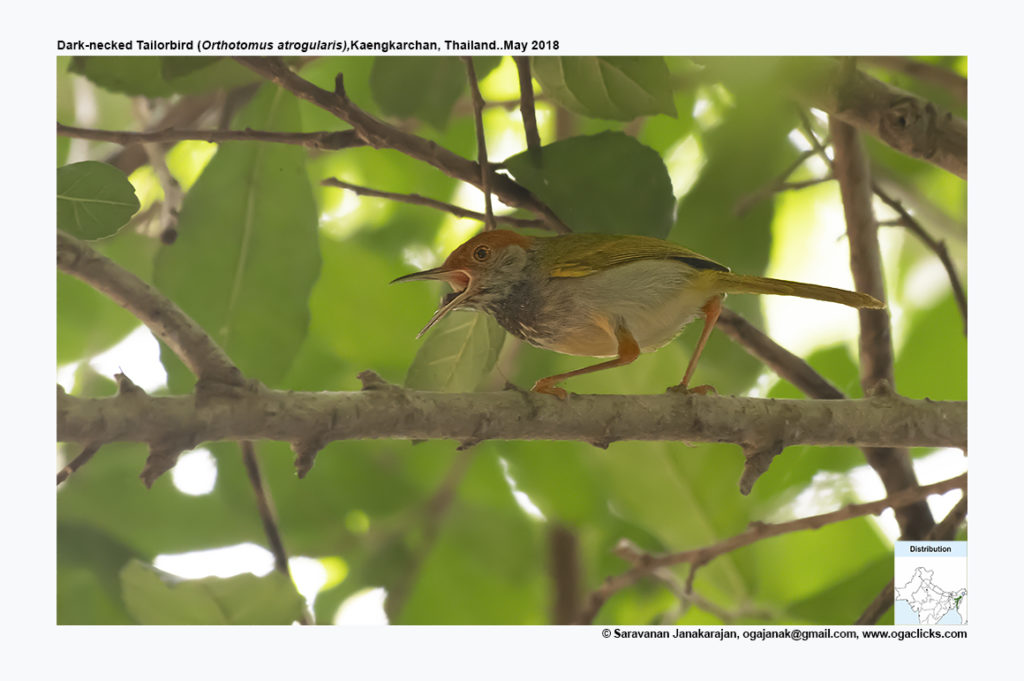Dark-necked Tailorbird

Dark-necked Tailorbird Orthotomus atrogularis
Etymology:
- Orthotomus : Greek word orthotomeo – to cut straight.
- Atrogularis : Latin word Atro – Dark, Gularis – Throat
Vernacular Names: Cachar: Hagra dao teetee
Distribution in India: Resident of Himalayas, Hills of North East and Western Ghats in India.
Description: Size of 11–12 cm; wt. of 7·5 g. It is a typical tailorbird, with relatively long and slightly decurved bill, but with black breast band. The male of nominate race in breeding plumage has rufous crown to back of head and down over side of head to eye level; upperparts, including upperwing and tail are green; underside of tail shows dusky subterminal shade and a narrow whitish fringe on each feather; ear-coverts and chin are pale, diffusely streaked with dark grey, offering some contrast with greyish-black throat and breast, black breaking up into streaks on breast side; remainder of underparts are off-white, tinged ash-grey in lower regions, becoming dull buffy yellow on flanks, brighter yellow on undertail-coverts and at bend of wing; feathered part of tibia are rufous; iris is olive-brown, buff-brown or reddish-brown; upper mandible is dark brown, cutting edges and lower mandible is yellowish-flesh; legs are brownish-flesh. The female lacks blackish throat but usually shows some dusky markings, also has paler rufous crown, duller flanks and undertail-coverts. The non-breeding male has dusky throat obscured by pale feather fringes, giving irregular streaking on throat. The juvenile has yellowish wash on throat and breast, lacks rufous on head, and upperparts are duller green. The races differ mainly in depth of coloration, extent of blackish on throat and clarity of off-white on underparts: race anambensis is very similar to nominate; race nitidus is brighter than nominate, white area of lower underparts lacking grey tinge; race humphreysi has more extensive black on breast, and pale lemon-yellow lower underparts.
Habitat: It is found in forests of a variety of types, including broadleaf evergreen, semi-evergreen or mixed deciduous, also secondary growth, bushy thickets and bamboo stands and locally in mangroves. It is found from lowland forest in foothills up to 1400 m.
Food Habits: It eats insects and other tiny invertebrates. Is found in pairs, foraging within dense cover; generally keeps low in undergrowth, but works its way up through tangled vegetation, vines, etc. It hops between perches while holding tail cocked high. It is distinctly shy and unobtrusive.
Breeding Habits: They breed in Mar–Aug in North East India and Feb–Sept in South East Asia. The nest is a deep pouch of fine fresh grasses and kapok down, constructed within a cone of one or two larger leaves stitched with strands of kapok or spider web. They lay a clutch of 2–5 eggs. The incubation is done by both sexes. The nest is parasitized by Plaintive Cuckoo.